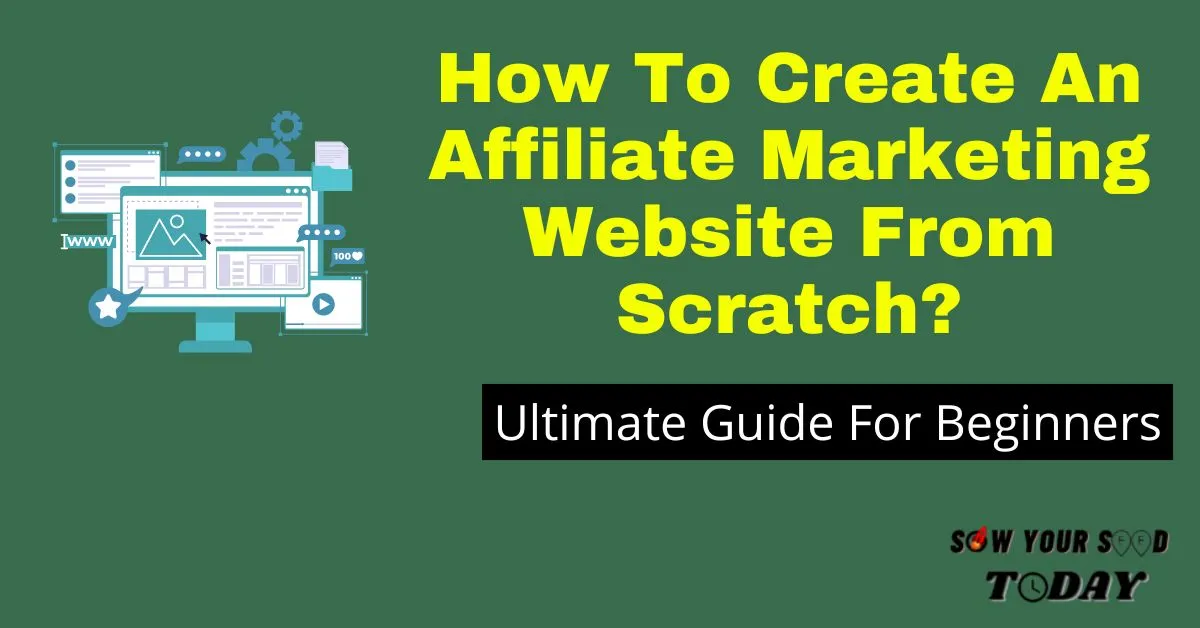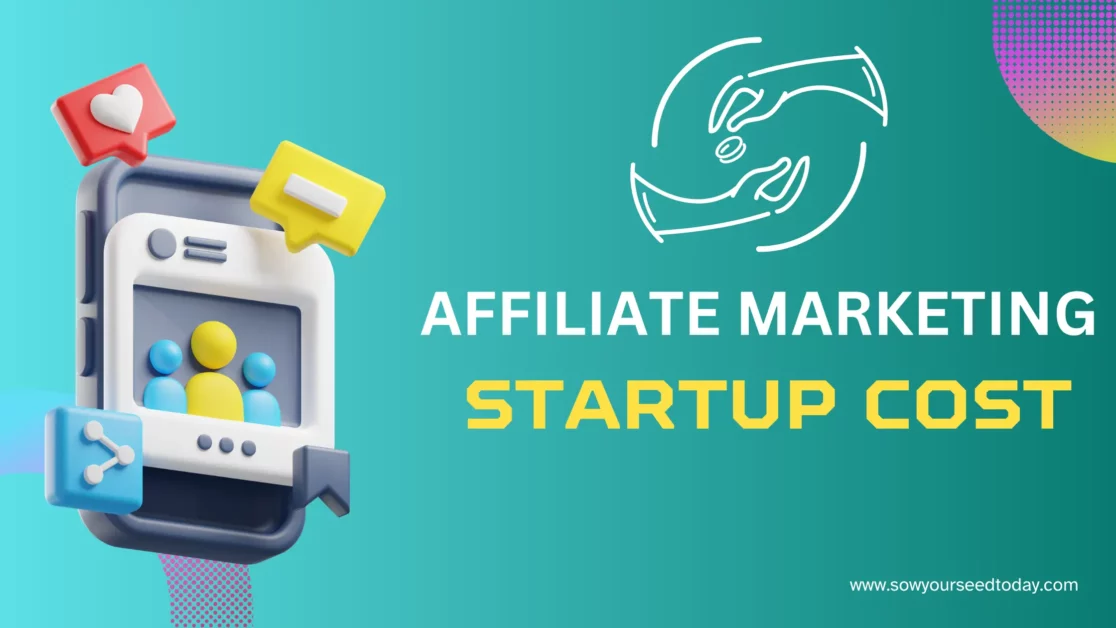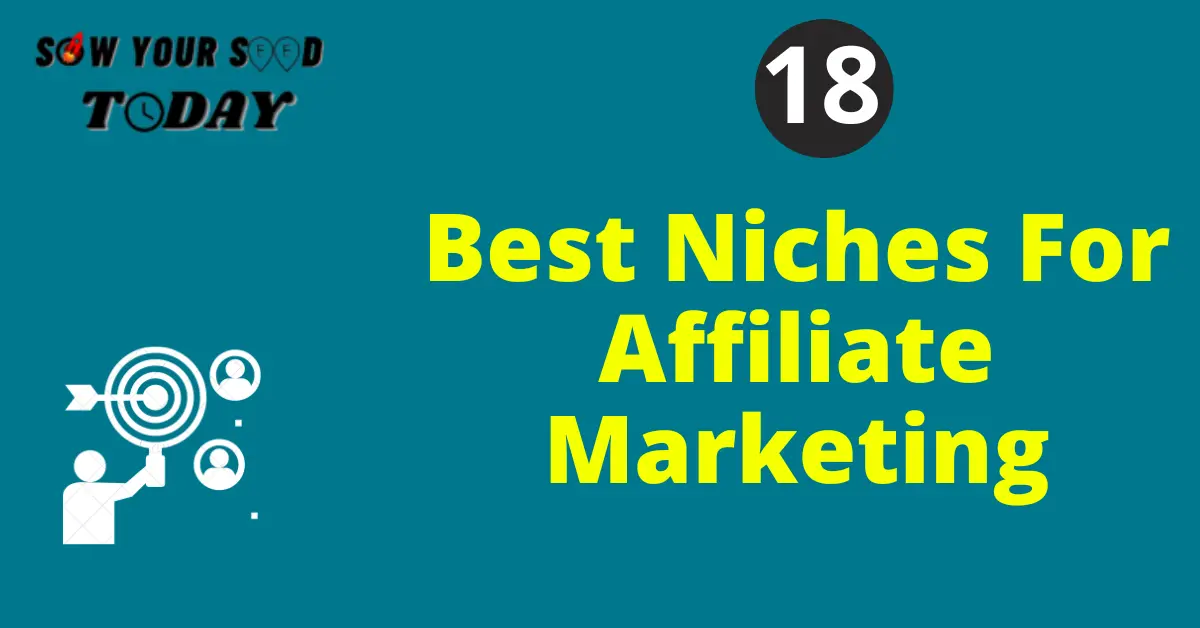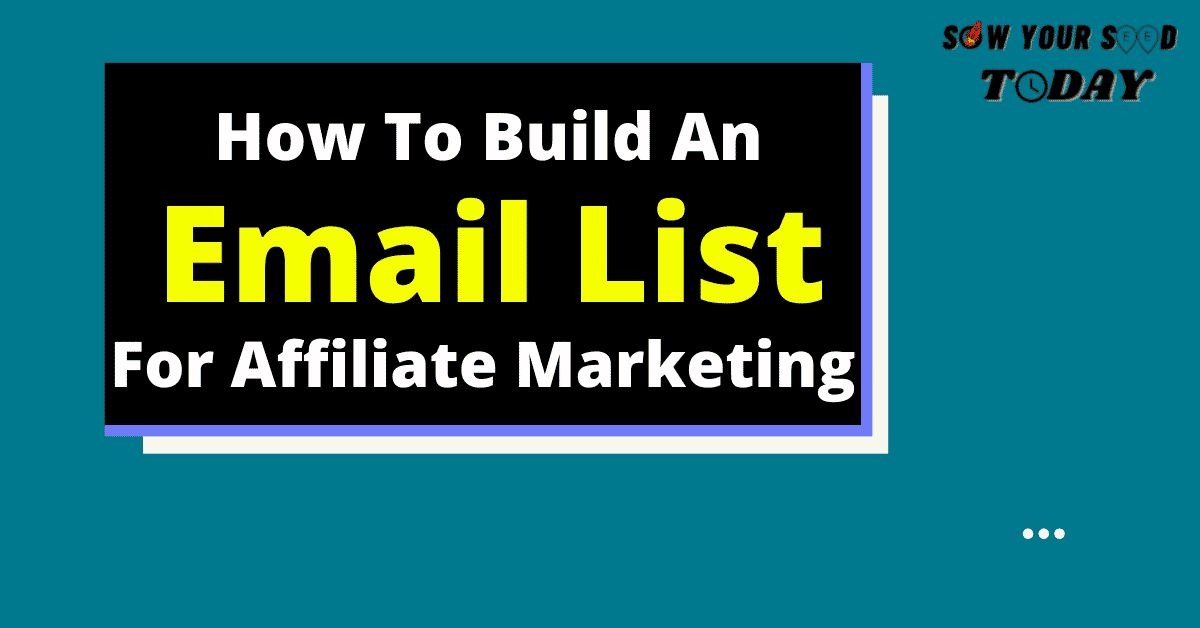Affiliate marketing is one of the most lucrative ways to make an extra and passive income online.
By promoting products and earning commissions on sales generated through your referrals, you can create a steady revenue stream without the need to develop your own products or manage inventory.
And one of the most effective ways to promote your affiliate marketing business is the use of a website.
In fact, an affiliate marketing website serves as your platform to reach potential customers, showcase relevant products and services, and provide valuable content that encourages purchases through your affiliate links.
So if you are wondering how to build an affiliate marketing website to promote your online business, you are in the right place.
In this guide, we will guide you through the entire process of creating a successful affiliate marketing website.
Whether you’re a beginner looking to get started with affiliate marketing or an experienced marketer aiming to optimize your strategies, this comprehensive guide will equip you with the knowledge and tools needed to build, grow, and monetize your website effectively.
That said, let’s dive in and start building your path to affiliate marketing success!
What is Affiliate Marketing, and how does it work?
Affiliate marketing is a performance-based business model where you, as an affiliate, earn a commission by promoting other
companies’ products or services. It is about promoting other people’s products or services for a commission.
There are three key players in the marketing channel: the merchant (or advertiser), the affiliate (or publisher), and the customer. When the customer makes a purchase through your affiliate link, you earn a commission.
That said, here is how it works practically:
Affiliate marketing operates through a tracking system that uses unique affiliate links or codes. Here’s a step-by-step breakdown:
As you can see, affiliate marketing is a win-win business model because, on the one hand, it allows companies to expand their reach and increase sales through performance-based partnerships, paying only for actual results.
On the other hand, it offers an opportunity to you the affiliate to earn passive income by promoting products and services you believe in, without the need to manage inventory or handle customer service.
Here are reasons to start affiliate marketing:
To help you better understand what I mean, let’s consider…
a practical example to illustrate how affiliate marketing works with the use of blogging:
Steps to create an affiliate marketing website with WordPress
Launching an affiliate marketing website is like launching a real business. It is a business in itself anyway.
So follow these proven steps to start building your affiliate marketing website.
Step #1. Choose A Profitable Niche

Building an affiliate marketing business is about blogging with the aim of monetizing your blog with affiliate marketing.
So, the first step to starting your affiliate marketing business is finding a profitable niche.
To help you find a profitable niche for your affiliate marketing business, follow these steps:
- Identify Your Interests and Passions
Start by listing your personal interests and passions. Choose a niche that you are genuinely interested in, as this will keep you motivated and engaged. Passion for the topic will also make it easier to create content and connect with your audience authentically.
- Research Market Demand
Once you have chosen a niche that aligns with your passion and interest, do market research to find out there is sufficient demand for your chosen niche. Use tools like Google Trends, keyword research tools like Jaaxy, and social media platforms like Facebook and YouTube to gauge the level of interest and search volume. Look for niches that have a steady or growing trend over time.
- Assess Competition
At this point, you have your niche with a high market demand. But before you start building your website, analyze the competition within your niche. While some competition is a sign that there is market e demand, too much can make it difficult to stand out.
For example, you can check your key competitors’s existing affiliate websites in potential niches and then evaluate their content, traffic, and monetization strategies.
To check the competition level within your niche, you can use tools like Jaaxy, Ahrefs, or SEMrush to analyze your competitors’ websites, their content, and their backlink profiles.
- Evaluate Profitability
Determine the profitability of your niche by researching potential affiliate programs and the commissions they offer. Some niches, like technology, health, and finance, tend to have higher-paying affiliate programs.
Make sure there are enough products or services to promote within your chosen niche.
- Find Your Unique Angle
Identify a unique angle or sub-niche to differentiate yourself from competitors. This could be a specific audience segment, a unique value proposition, or a specialized area within a broader niche.
For example, instead of focusing on general fitness, you could target “fitness for busy professionals” or “yoga for seniors.”
Related post: How to choose a profitable niche for blogging.
Step #2. Create Your Affiliate Marketing Website (Your Marketing Medium)
Building your affiliate marketing website involves several critical steps, each designed to ensure your site is user-friendly, engaging, and optimized for conversions. Here’s a step-by-step guide to get you started:
- Choose a Domain Name
Your domain name is your website’s address on the internet. It should be easy to remember, not too long, relevant to your niche, and preferably include keywords related to your niche (not mandatory).
There are a vast array of domain name registrar companies out there such us Namecheap, GoDaddy to choose from.
Once you find an available name, register it through a domain registrar.
If you don’t want to have multiple platforms to handle you can register your domain name with the same company you will be using for hosting.
- Select a Web Hosting Provider
A web hosting provider is essential for not only storing your website’s files but also making them accessible on the internet.
This is a necessary tool for building a professional affiliate marketing website because no hosting there is no website.
Just like the domain name, there are hundreds of website hosting service providers to choose from.
The most popular ones are Bluehost, HostGator, and Site Rubix.
Want to create your own affiliate marketing website but don’t have money to invest upfront?
It offers a 30-day free trial and there is no limit in terms of storage, and bandwidth.
Once you are ready to create your website, purchase your hosting plan and link it to your domain name.
- Install WordPress – Your Content Management System (CMS)
A CMS like WordPress makes it easy to build and manage your website without needing to code.
Most hosting providers like CXF Host, Wealthy Affiliate, and Bluehost offer one-click WordPress installation.
Once you have installed WordPress, choose a responsive and SEO-friendly theme from the WordPress repository to install and then customize your affiliate marketing blog or website to personalize the appearance of your site.
- Create Essential Pages
Certain pages are crucial for any website, especially an affiliate marketing site.
here are the essential pages you should have.
- Home Page
A home page is the main web page of your website and it provides an overview of your site. guide navigation through links and menus to the rest of the website’s content.
Located to the root of your website’s domain or subdomain,
home pages are typically built to grab your website’s visitors’ attention, serve as navigation to the rest of the site, demonstrate your site offerings, and provide relevant information to your new and returning users.
Note that when I am talking about the home page I mean creating a custom home page – not the default blog post excerpt home page. If you want to know the difference between both pages and why you need a custom home page for your affiliate marketing website, you can read my guide: blog post excerpt home page vs. a custom home page.
- About Page
The About page is where you can humanize your business by telling visitors about yourself and your affiliate marketing business.
It’s an opportunity to share your history, values, and achievements and also your vision and mission.
It’s also where you tell your customer what you do for them and how you work to meet their needs in that area.
- Contact Page
The contact page as its name suggests is a web page that offers a way for visitors to get in touch with you, whether through a contact form, email address, or social media links.
- Privacy Policy page
This page is a legal page and it explains how you handle user data and comply with legal requirements.
- Affiliate disclosure page
Just like the privacy policy page, the affiliate disclosure page is a legal page that tells your website’s visitors that you may get compensation when a visitor purchases a product or service using an affiliate link within your blog.
What is the next?
The next step once you have created your affiliate marketing website is to customize it and make it user-friendly.
Here are tips to make your blog or website user-friendly which is crucial for a better ranking:
Set up navigation to make your website easy to navigate
Organize your site’s main pages and categories into a clear menu structure.
Use sidebar widgets for additional navigation, like recent posts, popular posts, or a search bar.
Customize your permalink: Go to the settings to customize your permalink to be SEO friendly. It should be like this https://yoursitename/post-title.
After that, you can install the necessary plugins to extend the functionality of your affiliate marketing website.
Here are examples of plugins to consider:
YOAST SEO/ Rank Math: an SEO plugin that can help you with your website and content optimization.
Google Analytics: An analytic and tracking tool that helps you track and analyze. With this tool you can get insights into your site’s traffic and user behavior.
Everest Form: It is a plugin for creating customized and optimized contact forms for your website.
So with this plugin, you create and include some forms on your website.
An alternative I recommend is WPform.
Related post: How to create a money-making website from scratch
Step # 3. Create Valuable Content To Attract Visitors

Content is king in affiliate marketing. By considering the nature of affiliate marketing which is a value exchange business model, creating quality and valuable content that meets your audience’s needs is a must.
In fact, high-quality content not only attracts visitors but also builds trust and authority, which are crucial for conversions.
So focus on creating valuable, engaging, and informative content that meets your audience’s needs.
But before you start creating content, it’s essential to know who your audience is and what they need.
For that, you can use keyword research tools like Google Keyword Planner, Jaxxy of LongTail Pro to find relevant keywords and topics that your audience is searching for.
Here’s how you can create valuable content to attract and engage your audience:
All in all, optimize for SEO.
As you know traffic is the lifeblood of any online business including affiliate marketing. No traffic, no sales. So no commissions.
SEO helps your content rank higher in search engine results, increasing its visibility and attracting more visitors.
And when it comes to optimizing your content here is my advice:
- Use keywords naturally in your titles, headings, and throughout the content. Optimize your meta descriptions and use alt tags for images.
- Link to other relevant pages or blog posts on your site and to authoritative external sources if necessary.
- Use headings, bullet points, and short paragraphs to improve readability.
- Avoid thin content (less than 700 words).
In fact, longer, well-structured content tends to perform better in search results than thin content.
Also, create different types of content.
Here are type of articles you can write:
Step # 4. Promote Your Business To Attract Clients

Once your affiliate marketing website is up and running with valuable content, the next crucial step is to promote your business effectively to attract clients.
In fact, creating great content is just the first step; you also need to promote it effectively.
With blogging, you will naturally attract most of your visitors from search engines.
But truth be told it is not the first day of your affiliate marketing website launch you will climb on the top of the SERPS.
So here are the steps on how to promote your affiliate marketing website and draw in your target audience.
- Utilize social media platforms
Social media is a powerful tool for promoting your website and engaging with your audience.
There are several social media platforms such as Facebook, Instagram, Twitter, LinkedIn, Pinterest… My advice is to determine which social media platforms your target audience frequents the most and to focus your effort on that platform.
Follow these 3 simple steps:
- Set up professional profiles with clear descriptions and links to your website.
- Share your content regularly and use a mix of posts, including blog links, images, videos, and infographics.
- Engage with Followers by responding to their comments, and participating in discussions to build trust
- Leverage email marketing
Email marketing is a direct way to reach your audience and keep them informed about your latest content and promotions.
To build your email list you can use opt-in forms on your website to collect email addresses from visitors or build a landing page.
What I like about email marketing is that you can automate and personalize your email campaigns. That frees up your time.
Recommended email marketing tools:
Getresponse: offer a free plan. The premium plan starts at $19 monthly if paid monthly or $15.60 monthly if billed annually.
Aweber: Just like Getresponse they offer a free plan.
You can check out my top best email marketing tools for more options.
Also, read my email marketing guide for beginners.
Step # 5. Monetize Your Affiliate Marketing Website With Affiliate Programs
Monetizing your affiliate marketing website involves joining relevant affiliate programs and strategically integrating affiliate links into your content.
And the first step to monetizing your blog is to choose the right affiliate programs you can join. That means finding affiliate products that align with your values and interests as well as the interests of your targeted audience.
Once you have identified suitable affiliate programs, the next step is to sign up and become an affiliate partner.
But before you do, review the commission rates, payment methods, and other terms to ensure they meet your expectations.
Also, consider the cookie duration or cookie life, which determines how long after a buyer clicks on your affiliate link a sale will be attributed to you. The longer the cookie life the better your earning opportunities.
If you find that the program meets your needs, then you can apply for the affiliate program. What you just have to do is fill out the necessary forms with accurate information about your website, traffic, and audience and you are set to go. Some programs approve affiliates instantly, while others may take a few days to review your application.
Some of the popular affiliate marketing platforms are Amazon Associates, Impact, ShareASale, etc. But there are standalone affiliate programs you can join.
Also, read the best affiliate programs for beginners.
What to do once your application gets approved?
- Grab your affiliate link from your partner
- Incorporate affiliate links naturally within your content or blog posts (reviews, tutorials, and guides), and even within your email marketing campaigns.
- Optimize your content for conversions by using Clear Call-to-Actions (CTAs) to encourage your readers to click on your affiliate links.
How to create an affiliate marketing website – final thoughts…
Building an affiliate marketing website is a strategic and rewarding endeavor that combines content creation, digital marketing, and a deep understanding of your audience’s needs and preferences.
By carefully selecting a niche, designing an attractive and user-friendly website, and consistently producing valuable content, you lay the foundation for a successful affiliate marketing business.
By following these steps, you’ll be well on your way to building a thriving affiliate marketing website that not only generates income but also provides real value to your audience.
Ready to turn your passion into profit starting today?
To Your Succes!
Be an ACTION Taker, SOW YOUR SEED TODAY!







